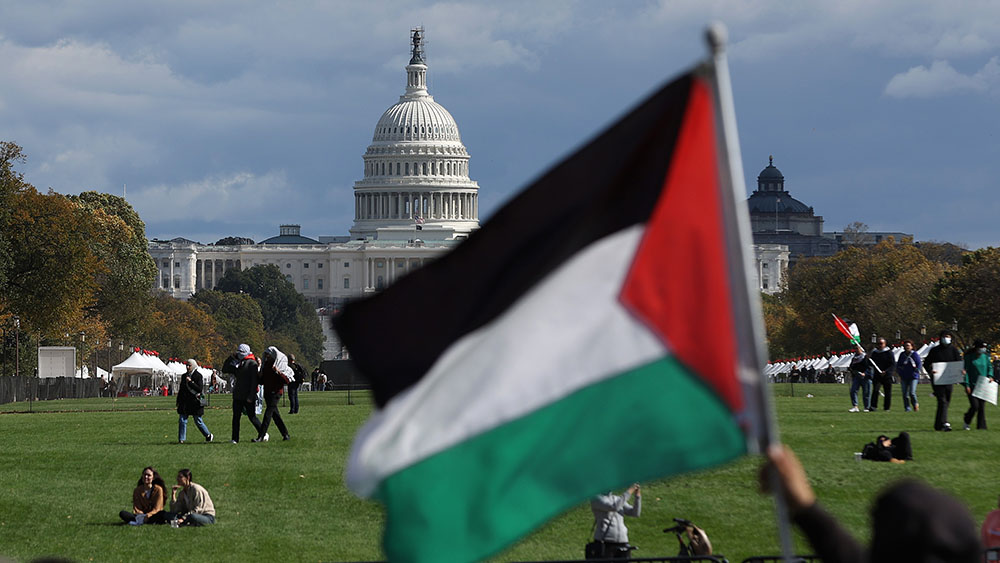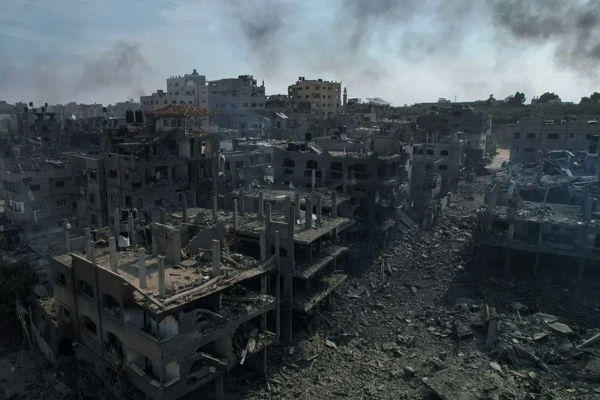Hamas rejects U.S. ceasefire proposal; will accept nothing less than a PERMANENT END to the war
06/12/2024 / By Belle Carter

The militant group Hamas on Tuesday, June 11, formally rejected the ceasefire proposal outlined by the administration of President Joe Biden for its ongoing war with Israel.
An Israeli official said the country had received Hamas’ answer from the mediators and that Hamas “changed all of the main and most meaningful parameters” in the said proposal. Egypt and Qatar said they had also received the response but did not disclose the contents.
For Israel, Hamas’ response was an outright rejection of the plan while a Hamas official, who declined to be identified, claimed that the group merely reaffirmed its stance that a ceasefire must lead to a permanent end to hostilities in Gaza, withdrawal of Israeli forces, reconstruction of the Palestinian enclave and release of Palestinian prisoners in Israel.
“We reiterated our previous stance. I believe there are no big gaps. The ball is now in the Israeli courtyard,” the Hamas source said. (Related: Hamas to boycott ceasefire negotiations as long as Israel continues killing Palestinians in Rafah.)
Last week, the Wall Street Journal published a report saying that Hamas leader Yahya Sinwar already told Arab negotiators that the resistance movement would not give up its arms and would only accept a ceasefire proposal that commits to a permanent end to the war.
“Hamas will not surrender its guns or sign a proposal that asks for that,” Sinwar said. The message came as Central Intelligence Agency Director William Burns went back to Doha, Qatar to continue talks, which aimed at reinforcing the ceasefire proposal presented by the United States government.
Biden presented the proposal in a speech last week, saying Israel had offered it. Meanwhile, Israeli Prime Minister Benjamin Netanyahu confirmed that Tel Aviv will not agree to a permanent ceasefire until Hamas is defeated.
“The war will be stopped to return hostages and then we will proceed with a discussion,” he said.
According to a copy of the U.S.-proposed ceasefire plan, obtained exclusively by Middle East Eye (MEE), the initiative does not include a permanent ceasefire. Instead, it calls for a 42-day “temporary cessation of military operations” that will be followed by “open-ended” negotiations for a permanent ceasefire.
The “temporary ceasefire” could potentially be extended after the 42-day phase “as long as negotiations on the conditions of stage two of the agreement are ongoing,” the document indicated as per MEE. The plan violates Hamas’ main terms for an agreement, most prominently a permanent end to the war, making it unlikely that the movement will accept the terms.
U.S. evaluates Hamas’ amendments to ceasefire plan
The White House has already received Hamas’ reply to the ceasefire proposal and is “evaluating it right now,” National Security Council spokesperson John Kirby told journalists.
Secretary of State Antony Blinken is channeling global support for a United Nations Security Council resolution backing the ceasefire proposal. He also said that Netanyahu had “reaffirmed his commitment” to the plan.
The UN vote was the first time a deeply divided security council has endorsed a comprehensive plan for Gaza. Palestinian support for the U.S. resolution made it much harder diplomatically for Russia or China to veto it.
Blinken also met Israeli opposition leaders and spoke privately to hostages’ families before going to Jordan for an emergency summit on humanitarian aid for Gaza. There he announced an extra $404 million in U.S. funding for aid for the enclave and called on other countries to step up donations.
Meanwhile, Palestinian Authority President Mahmoud Abbas said the international community had a responsibility to press Israel to open land crossings into Gaza. His Egyptian counterpart, Abdel Fattah al-Sisi, said international pressure was needed to stop Israel from using hunger as a weapon.
In Gaza, there was skepticism that the deal would bring a halt to Israeli attacks that have killed more than 37,000 people, according to health authorities in the strip, and brought at least half the population to the brink of famine.
“We will believe it only when we see it,” said Shaban Abdel-Raouf, 47, displaced with his family of five to the central town of Deir al-Balah. “When they tell us to pack our belongings and prepare to go back to Gaza City, we will know it is true.”
IsraelCollapse.com has more updates on the ongoing conflict between Israel and Hamas.
Watch the video below that talks about the U.S. draft resolution for a ceasefire in Gaza being adopted by the UN Security Council.
This video is from the CreeperStatus channel on Brighteon.com.
More related stories:
Hamas accepts U.S.-brokered ceasefire proposal – Israel immediately REJECTS IT.
Gallant says Israel will forge on in Rafah despite UN world court demanding ceasefire.
Sources include:
Submit a correction >>
Tagged Under:
Arab mediators, Benjamin Netanyahu, big government, Blinken, ceasefire, ceasefire negotiations, chaos, conspiracy, end of war, Gaza, Hamas, humanitarian, Israel, Israel-Hamas war, Joe Biden, national security, Palestine, politics, resist, White House, World War III, Yahya Sinwar
This article may contain statements that reflect the opinion of the author
RECENT NEWS & ARTICLES
COPYRIGHT © 2017 HUMANITARIAN NEWS
















